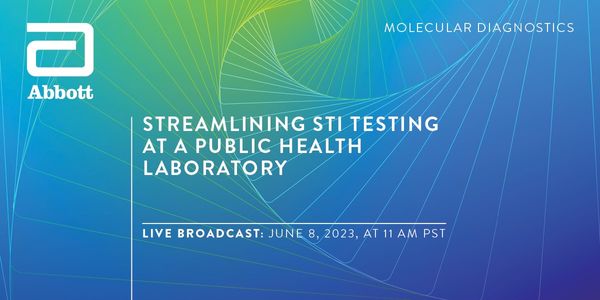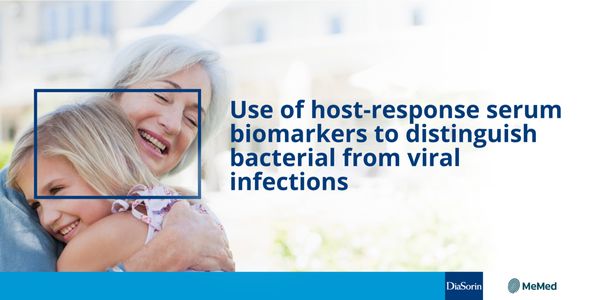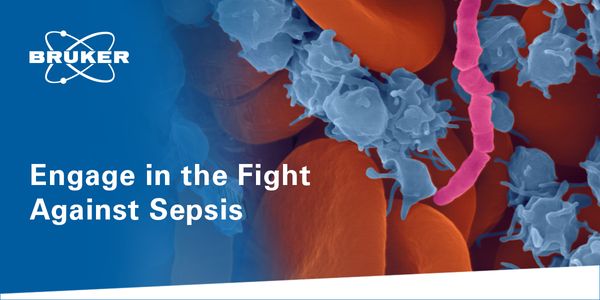Continuing Education
Continuing Education: is a specific learning activity generally characterized by the issuance of a certificate or continuing education units (CEU) for the purpose of documenting attendance at a designated seminar or course of instruction.
-
JUN 27, 2023 | 11:00 AMC.E. CREDITSCancer is a leading cause of death worldwide, accounting for nearly 10 million deaths in 2020, or nearly one in six deaths, according to the World Health Organization. Many cancers can be cu...JUN 27, 2023 | 8:00 AMC.E. CREDITSQuality sample preparation is fundamental to the analytical process. Tissue Processing is the most complex and one of the longest step in the histology workflow. The quality of the processed...JUN 22, 2023 | 11:00 AMC.E. CREDITSWhen building your own infectious disease molecular panels there are many paths to consider. In this interview, we ask Marcus Cognetti and Dr. Ari Frenkel what approach is required to create...JUN 20, 2023 | 10:00 AMC.E. CREDITSSpatial biology enables researchers to characterize combined molecular information and spatial...JUNE 15, 2023 2:00 PM ETThe importance of Sol M safety feature solutions to prevent the serious risks associated with needlestick injuries....Speaker: Marli Gitles , Jori TylerJUN 15, 2023 | 8:00 AMC.E. CREDITSELISA (Enzyme-Linked Immunosorbent Assay) is a powerful and well-established method that enables researchers to detect and quantify a wide range of soluble substances, such as peptides, prot...JUN 14, 2023 | 8:00 AMC.E. CREDITSInfluenza is a highly contagious respiratory illness that affects millions of people worldwide each year. The influenza virus is constantly evolving, making it difficult to predict and preve...JUN 13, 2023 | 8:00 AMC.E. CREDITS1. HBV 5 Line Guideline (Proposed): • Test all adults for Hepatitis B with the triple panel: HBsAg, Anti HBc total, Anti HBs • Vaccinate all adults for HBV who are HBV triple panel...JUN 08, 2023 | 11:00 AMC.E. CREDITSLearning Objectives: Understand the current STI landscape in the US Discuss the operational efficiency with implementation of Alinity m STI Review the clinical performance of Alinity m STI...JUN 08, 2023 | 9:00 AMC.E. CREDITSIn the emergency department, distinguishing between bacterial and viral infections can be challenging, leading to inappropriate use of antibiotics that may contribute to the development of b...JUN 06, 2023 | 9:00 AMC.E. CREDITSTransmission electron microscopy reveals the architecture of cells at nanometer resolution, but chemical fixation severely warps their native structure. The true ultrastructure of cells can...JUN 06, 2023 | 8:00 AMC.E. CREDITSAs the life sciences industry continues to evolve, so does the need for advanced laboratory management solutions that can help improve efficiency, streamline workflows, and ensure compliance...MAY 31, 2023 | 10:00 AMC.E. CREDITSDate: May 31, 2023 Time: 10:00am (PDT), 1:00pm (EDT), 5:00pm (CEST) Bloodstream infections (BSIs) are defined as a systemic infection resulting from the presence of viable microorganisms in...MAY 31, 2023 | 6:00 AMC.E. CREDITSAlthough metagenomic next-generation sequencing (mNGS) is increasingly used in clinical microbiological diagnosis, especially for rare or complicated infectious diseases, the applications of...MAY 25, 2023 | 10:00 AMC.E. CREDITSFree light chains, kappa (κ) lambda (λ), are produced by plasma cells and known to be an important marker in patients with Multiple Myeloma and AL Amyloidosis. The precursor con...MAY 23, 2023 | 7:00 AMC.E. CREDITSFourier Transform Infrared (FTIR) spectroscopy is an emerging technology in the field of microbiology. Recent studies have shown its utility for bacterial typing and the identification of ou...MAY 09, 2023 | 1:00 PMC.E. CREDITSDate: May 09, 2023 Time: 5:00am (PDT), 8:00pm (EDT), 2:00pm (CEST) Advances in high content imaging (HCI) have improved the use of cell culture to make a large number of comparisons within i...MAY 02, 2023 | 8:00 AMC.E. CREDITSAbstract Learning Objectives Define a tertiary lymphoid structure in human cancer Describe the tumor microenvironment factors that influence the formation of tertiary lymphoid structures Ide...APR 28, 2023 | 12:00 AMC.E. CREDITSHeparin-Induced Thrombocytopenia (HIT): Practical Aspects of Clinical and Laboratory Diagnosis Heparin-Induced Thrombocytopenia (HIT) is a life-threatening complication following heparin exp...Speaker: Jerrold Levy. MD, FAHA, FCCMAPR 27, 2023 | 7:00 AMC.E. CREDITSDate: April 27, 2023 Time: 7:00am (PDT), 10:00pm (EDT), 4:00pm (CEST) At least 20 million hepatitis E virus (HEV) infections occur annually, with more than 3 million symptomatic cases and 60...APR 26, 2023 | 11:00 AMC.E. CREDITSDate: April 26, 2023 Time: 11:00am (PDT), 2:00pm (EDT), 8:00pm (CEST) Von Willebrand disease is one of the most common bleeding disorders that affects both men and women equally. However, th...APR 25, 2023 | 10:00 AMC.E. CREDITSDate: April 25, 2023 Time: 8:00am (PDT), 11:00am (EDT), 5:00pm (CEST) A liquid biopsy is a non-invasive alternative to a surgical biopsy that enables researchers to learn a range of infor...APR 25, 2023 | 8:00 AMC.E. CREDITSDate: April 25, 2023 Time: 8:00am (PDT), 11:00am (EDT), 5:00pm (CEST) Several promising immunotherapies have emerged in recent decades due to advances in cancer immunology. The paradigm o...APR 25, 2023 | 8:00 AMC.E. CREDITSDate: April 25, 2023 Time: 8:00am (PDT), 11:00am (EDT), 5:00pm (CEST) This educational webinar will provide an overview of cell sorting techniques used to isolate individual cells based on sp...
JUN 27, 2023 | 11:00 AM
C.E. CREDITS
Cancer is a leading cause of death worldwide, accounting for nearly 10 million deaths in 2020, or nearly one in six deaths, according to the World Health Organization. Many cancers can be cu...
JUN 27, 2023 | 8:00 AM
C.E. CREDITS
Quality sample preparation is fundamental to the analytical process. Tissue Processing is the most complex and one of the longest step in the histology workflow. The quality of the processed...
JUN 22, 2023 | 11:00 AM
C.E. CREDITS
When building your own infectious disease molecular panels there are many paths to consider. In this interview, we ask Marcus Cognetti and Dr. Ari Frenkel what approach is required to create...
JUN 20, 2023 | 10:00 AM
C.E. CREDITS
Spatial biology enables researchers to characterize combined molecular information and spatial...
JUNE 15, 2023 2:00 PM ET
The importance of Sol M safety feature solutions to prevent the serious risks associated with needlestick injuries....
Speaker:
Marli Gitles
, Jori Tyler
JUN 15, 2023 | 8:00 AM
C.E. CREDITS
ELISA (Enzyme-Linked Immunosorbent Assay) is a powerful and well-established method that enables researchers to detect and quantify a wide range of soluble substances, such as peptides, prot...
JUN 14, 2023 | 8:00 AM
C.E. CREDITS
Influenza is a highly contagious respiratory illness that affects millions of people worldwide each year. The influenza virus is constantly evolving, making it difficult to predict and preve...
JUN 13, 2023 | 8:00 AM
C.E. CREDITS
1. HBV 5 Line Guideline (Proposed): • Test all adults for Hepatitis B with the triple panel: HBsAg, Anti HBc total, Anti HBs • Vaccinate all adults for HBV who are HBV triple panel...
JUN 08, 2023 | 11:00 AM
C.E. CREDITS
Learning Objectives: Understand the current STI landscape in the US Discuss the operational efficiency with implementation of Alinity m STI Review the clinical performance of Alinity m STI...
JUN 08, 2023 | 9:00 AM
C.E. CREDITS
In the emergency department, distinguishing between bacterial and viral infections can be challenging, leading to inappropriate use of antibiotics that may contribute to the development of b...
JUN 06, 2023 | 9:00 AM
C.E. CREDITS
Transmission electron microscopy reveals the architecture of cells at nanometer resolution, but chemical fixation severely warps their native structure. The true ultrastructure of cells can...
JUN 06, 2023 | 8:00 AM
C.E. CREDITS
As the life sciences industry continues to evolve, so does the need for advanced laboratory management solutions that can help improve efficiency, streamline workflows, and ensure compliance...
MAY 31, 2023 | 10:00 AM
C.E. CREDITS
Date: May 31, 2023 Time: 10:00am (PDT), 1:00pm (EDT), 5:00pm (CEST) Bloodstream infections (BSIs) are defined as a systemic infection resulting from the presence of viable microorganisms in...
MAY 31, 2023 | 6:00 AM
C.E. CREDITS
Although metagenomic next-generation sequencing (mNGS) is increasingly used in clinical microbiological diagnosis, especially for rare or complicated infectious diseases, the applications of...
MAY 25, 2023 | 10:00 AM
C.E. CREDITS
Free light chains, kappa (κ) lambda (λ), are produced by plasma cells and known to be an important marker in patients with Multiple Myeloma and AL Amyloidosis. The precursor con...
MAY 23, 2023 | 7:00 AM
C.E. CREDITS
Fourier Transform Infrared (FTIR) spectroscopy is an emerging technology in the field of microbiology. Recent studies have shown its utility for bacterial typing and the identification of ou...
MAY 09, 2023 | 1:00 PM
C.E. CREDITS
Date: May 09, 2023 Time: 5:00am (PDT), 8:00pm (EDT), 2:00pm (CEST) Advances in high content imaging (HCI) have improved the use of cell culture to make a large number of comparisons within i...
MAY 02, 2023 | 8:00 AM
C.E. CREDITS
Abstract Learning Objectives Define a tertiary lymphoid structure in human cancer Describe the tumor microenvironment factors that influence the formation of tertiary lymphoid structures Ide...
APR 28, 2023 | 12:00 AM
C.E. CREDITS
Heparin-Induced Thrombocytopenia (HIT): Practical Aspects of Clinical and Laboratory Diagnosis Heparin-Induced Thrombocytopenia (HIT) is a life-threatening complication following heparin exp...
Speaker:
Jerrold Levy. MD, FAHA, FCCM
APR 27, 2023 | 7:00 AM
C.E. CREDITS
Date: April 27, 2023 Time: 7:00am (PDT), 10:00pm (EDT), 4:00pm (CEST) At least 20 million hepatitis E virus (HEV) infections occur annually, with more than 3 million symptomatic cases and 60...
APR 26, 2023 | 11:00 AM
C.E. CREDITS
Date: April 26, 2023 Time: 11:00am (PDT), 2:00pm (EDT), 8:00pm (CEST) Von Willebrand disease is one of the most common bleeding disorders that affects both men and women equally. However, th...
APR 25, 2023 | 10:00 AM
C.E. CREDITS
Date: April 25, 2023 Time: 8:00am (PDT), 11:00am (EDT), 5:00pm (CEST) A liquid biopsy is a non-invasive alternative to a surgical biopsy that enables researchers to learn a range of infor...
APR 25, 2023 | 8:00 AM
C.E. CREDITS
Date: April 25, 2023 Time: 8:00am (PDT), 11:00am (EDT), 5:00pm (CEST) Several promising immunotherapies have emerged in recent decades due to advances in cancer immunology. The paradigm o...
APR 25, 2023 | 8:00 AM
C.E. CREDITS
Date: April 25, 2023 Time: 8:00am (PDT), 11:00am (EDT), 5:00pm (CEST) This educational webinar will provide an overview of cell sorting techniques used to isolate individual cells based on sp...
























